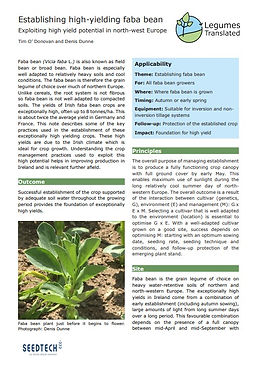Cool-season grain legumes
Cultivation of white lupins

White lupins (Lupinus albus) are a different botanical species from narrow-leaved or "blue" lupins (Lupinus angustifolius). White lupins tolerate heavier soils and have a higher yield potential, but do not ripen until August/September. Important for their cultivation is the use of healthy, certified seeds, sowing as early as possible and the right choice of variety to avoid infection with the fungal disease anthracnose, which is spread through the seed. The most important experiences for organic cultivation are summarized here.
Arncken, C., Klaiss, M., Wendling, M., Messmer, M.
Feeding faba bean to dairy cows

More UK dairy farmers are moving away from soya as a protein source
for a range of reasons including consumer concerns about the environmental and social consequences of soya production in some exporting countries. This practice note discusses the suitability of faba bean (field bean) for the replacement of soya in dairy rations.
MacPherson, L. L.
Feeding pea to dairy cows

Soya can be successfully substituted with peas in dairy cows without affecting milk output or compositional quality.
Being able to produce more home-grown protein in the form of pea can reduce the reliance on soya and feed costs.
MacPherson, L. L.
Establishing high-yielding faba bean

